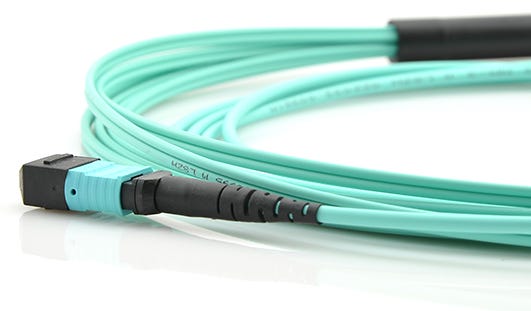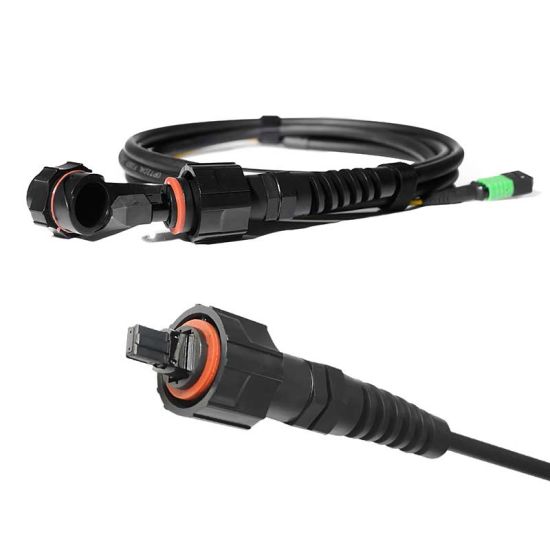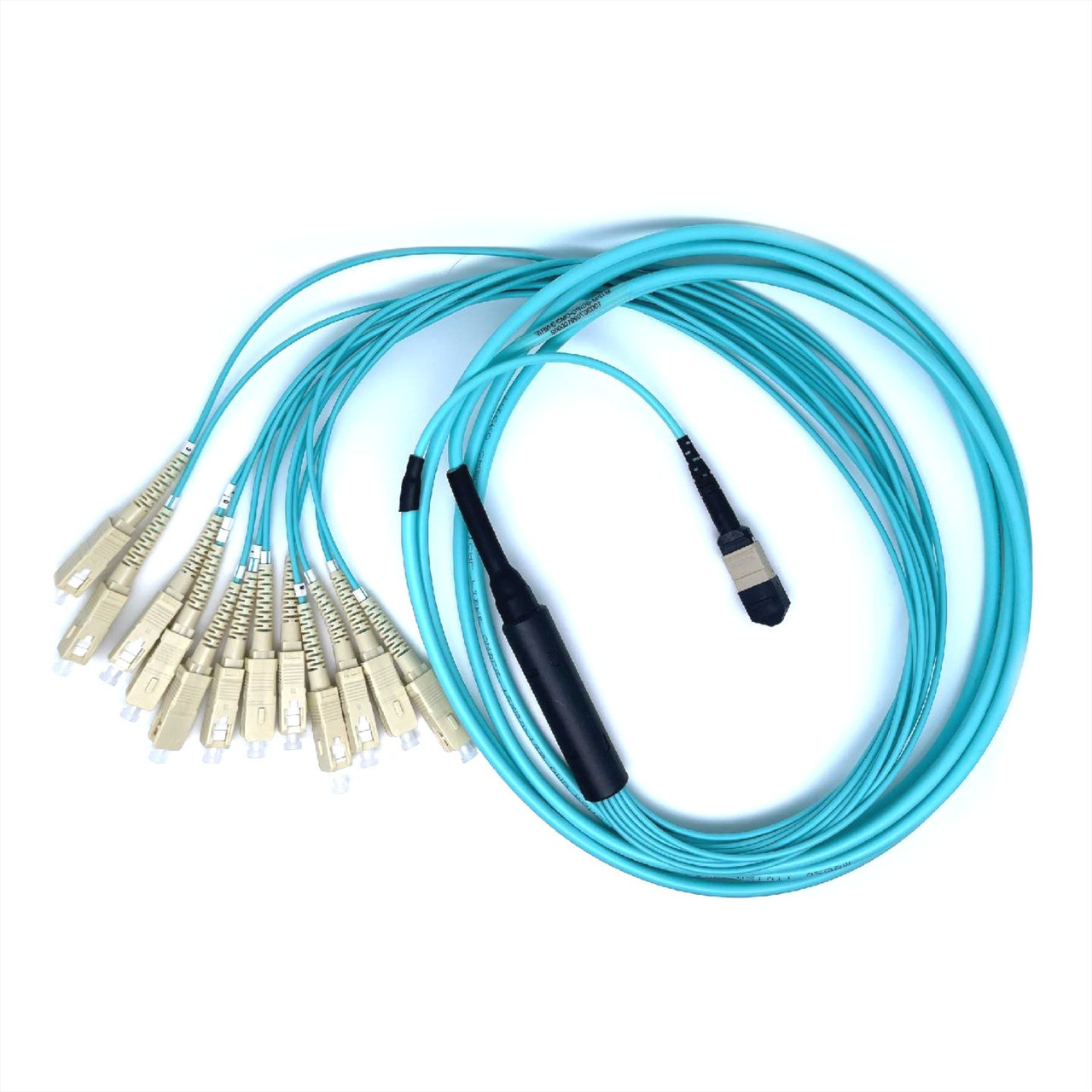Understanding Different Types of MPO Breakout Cables

MPO breakout cables play a crucial role in modern networking environments, especially in data centers. These MPO cables, commonly found in datacenters and telecommunications companies, facilitate efficient connections for high-speed networks. They enable seamless transitions from duplex-based 10G applications to parallel optics-based 40G/100G/400G applications. The blog aims to provide an in-depth understanding of the different types of MPO breakout cables, including singlemode and multimode options, highlighting their importance in achieving high-density connections and reducing clutter. Additionally, the use of MPO connectors and fiber optic jumpers in these breakout cables ensures reliable and efficient network performance.
Overview of MPO Breakout Cables
What are MPO Breakout Cables?
Definition and Basic Function
MPO breakout cables, also known as fanout cables, serve a critical function in high-speed networking environments. These cables feature an MPO connector on one end and multiple duplex connectors, such as LC, SC, or ST, on the other end. This design allows a single high-speed port to connect to multiple lower-speed ports. For example, an 8-fiber MPO interface can connect a 100 Gig switch port to four 25 Gig servers. This configuration maximizes switch port density and utilization, reducing overall costs.
Common Uses in Networking
MPO breakout cables find extensive use in data centers and telecommunications networks. They facilitate seamless transitions from duplex-based 10G applications to parallel optics-based 40G/100G/400G applications. These cables connect LAN switches and servers to patch panels and infrastructure, supporting high-density connections. The use of MPO breakout cables reduces clutter by consolidating multiple duplex LC cables into a single assembly.
Key Features of MPO Breakout Cables
Fiber Count
MPO breakout cables come in various fiber counts to suit different applications. Common options include 8-fiber, 12-fiber, and 24-fiber configurations. An 8-fiber MPO to 4xLC breakout cable links an MPO-based QSFP+ or QSFP28 transceiver to four independent LC-based 10G/25G SFP+ transceivers. A 12-fiber or 24-fiber MPO harness cable combines six or twelve duplex LC ports into one MPO connector, connecting to a single MPO connector on a patch panel.
Connector Types
The choice of connector type depends on the specific application and existing infrastructure. MPO to LC breakout cables transition 40G or 100G MPO interfaces to 10G duplex LC SFP+. MPO to SC breakout cables and MPO to ST breakout cables offer similar functionality for different connector standards. These options provide flexibility in connecting various devices within a network.
Cable Lengths
MPO breakout cables are available in different lengths to accommodate diverse installation requirements. Shorter lengths suit intra-rack connections, while longer lengths support inter-rack or even inter-building connections. Selecting the appropriate cable length ensures optimal performance and ease of installation.
Product Information:
MPO fiber breakout cables: Ideal for data centers and telecommunications companies.
MPO® fanout/breakout cables: Available with 12-fiber or 24-fiber MPO® connectors.
12 Fiber MPO Breakout Cables: Commonly used to consolidate duplex LC cables, reducing cost and clutter.

Types of MPO Breakout Cables
Based on Fiber Count
8-Fiber Breakout Cables
8-fiber breakout cables provide a practical solution for high-density connections in data centers. These cables connect an 8-fiber MPO connector to four duplex LC connectors. This configuration supports applications such as 40G to 10G transitions. The compact design reduces the number of required fiber optic jumpers, minimizing clutter and improving airflow.
12-Fiber Breakout Cables
12-fiber breakout cables offer versatility in networking environments. These cables feature a 12-fiber MPO connector on one end and six duplex LC connectors on the other. This setup facilitates connections between 40G or 100G MPO interfaces and multiple 10G duplex LC ports. Data centers often use these cables to optimize space and enhance network performance.
24-Fiber Breakout Cables
24-fiber breakout cables cater to high-bandwidth applications. These cables connect a 24-fiber MPO connector to twelve duplex LC connectors. This configuration supports 100G to 10G transitions, making it ideal for large-scale data centers. The higher fiber count allows for greater flexibility and scalability in network design.
Based on Connector Type
MPO to LC Breakout Cables
MPO to LC breakout cables transition high-speed MPO interfaces to standard LC connectors. These cables support 40G or 100G applications by connecting MPO-based transceivers to LC-based SFP+ transceivers. The use of LC connectors ensures compatibility with existing infrastructure, making these cables a popular choice in data centers.
MPO to SC Breakout Cables
MPO to SC breakout cables provide a reliable connection between MPO interfaces and SC connectors. These cables facilitate the transition from high-speed MPO ports to SC-based devices. Telecommunications companies often use these cables to maintain network consistency and reliability.
MPO to ST Breakout Cables
MPO to ST breakout cables connect MPO interfaces to ST connectors. These cables support various networking applications, including data centers and enterprise networks. The ST connectors provide a secure and stable connection, ensuring optimal network performance.
Based on Application
Data Centers
Data centers rely heavily on MPO breakout cables to manage high-density connections. These cables enable efficient transitions from 10G to 40G or 100G applications. The use of MPO connectors reduces the number of required fiber optic jumpers, minimizing clutter and improving airflow. Data centers benefit from the scalability and flexibility offered by these cables.
Telecommunications
Telecommunications networks use MPO breakout cables to support high-speed data transmission. These cables facilitate connections between central offices and remote sites. The use of singlemode and multimode MPO cables ensures compatibility with various network components. Telecommunications companies benefit from the reliability and efficiency provided by these cables.
Enterprise Networks
Enterprise networks utilize MPO breakout cables to enhance connectivity and performance. These cables support various applications, including data transfer and communication services. The use of MPO connectors and fiber optic jumpers ensures seamless integration with existing infrastructure. Enterprise networks benefit from the cost-effectiveness and scalability of these cables.

Practical Considerations
Choosing the Right MPO Breakout Cable
Assessing Network Requirements
Selecting the appropriate MPO breakout cable involves understanding network requirements. Datacenters often require high-density connections to support large-scale operations. Evaluating the bandwidth needs and the number of connections helps in choosing the right fiber count. An 8-fiber breakout cable suits smaller setups, while a 24-fiber breakout cable fits larger networks. The choice between singlemode and multimode cables depends on the distance and data rate requirements. Singlemode cables offer higher bandwidth over longer distances, whereas multimode cables are cost-effective for shorter distances.
Compatibility with Existing Infrastructure
Compatibility with existing infrastructure is crucial when selecting MPO breakout cables. The type of MPO connector must match the equipment in use. MPO to LC breakout cables are common in datacenters due to their widespread use. MPO to SC and MPO to ST breakout cables cater to specific networking standards. Ensuring that the chosen breakout cable integrates seamlessly with current hardware prevents connectivity issues. Proper assessment of the existing setup guarantees optimal performance and reduces downtime.
Installation and Maintenance Tips
Proper Handling and Storage
Proper handling and storage of MPO breakout cables ensure longevity and reliability. Avoid bending or twisting the cables excessively to prevent damage. Store the cables in a clean, dry environment to protect them from dust and moisture. Use protective caps on MPO connectors when not in use to maintain cleanliness. Following these practices minimizes the risk of signal loss and maintains the integrity of the fiber optic jumpers.
Regular Testing and Inspection
Regular testing and inspection of MPO breakout cables are essential for maintaining network performance. Periodically check the cables for signs of wear or damage. Use specialized testing equipment to measure signal strength and identify any issues. Conducting routine inspections helps in early detection of potential problems, allowing for timely repairs or replacements. Maintaining a schedule for testing ensures that the network operates efficiently without unexpected disruptions.
See Also
How to Choose the Best FTTH Fiber Optical Telecom Solutions
How to Efficiently Install Fiber Optic Fast Connectors
What Are the Components of Fiber and 5G?
Understanding the Differences Between FBT and PLC Splitters
Selecting the Best E2000 Patch Cord: Simplex, Duplex, Single Mode, Multimode
About US
Follow Us
AnetFiber company's main products are indoor and outdoor optical fiber cables, outdoor waterproof pre-connected fiber-to-the-home products, PLC optical fiber splitters, optical fiber jumpers and pigtails, MTP®/MPO high-density big data product solutions, optical fiber field quick connectors and research and development molding, injection molding and production of optical fiber distribution boxes, optical fiber chassis cabinets, the market has expanded to the world, Europe, America, Asia, the Middle East and Latin America.
Address
Shenzhen City, Baoan District, Yanluo Street, Tangxiayong Community, Yangyong Industrial Road, Tonggangda New Energy Vehicle Park 406
Contacts
+86 199 2655 3586

